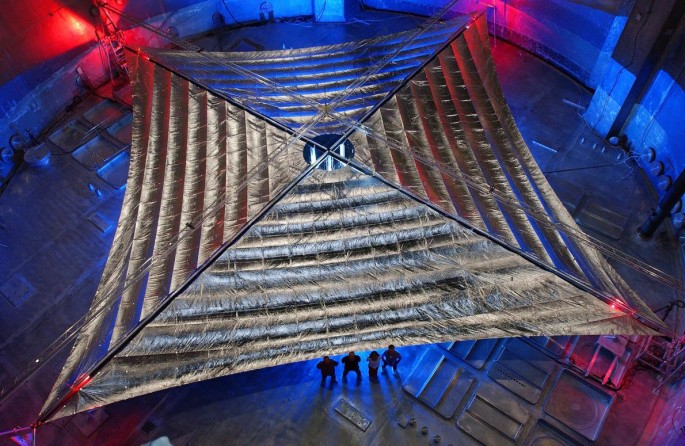In what is being described as a major leap in spacecraft technology, NASA announced early this week that it plans to launch solar-powered spaceships in 2018, while will make space travel less expensive as well as more sustainable.
According to a report in National Geographic, in 2018, NASA will launch a small space probe to explore a remote asteroid. This will be the first time when the space agency will be using solar-powered sails for the spacecraft that will undertake a journey beyond the orbit of the earth.
As the solar sails will possibly help to venture to the furthest regions of our solar system faster compared to all spacecrafts so far, scientists at NASA hope that they would be able to explore the interstellar space sooner or later.
Currently, scientists at the NASA are working on a small space probe incorporating solar sails, which will be powered by sunlight. According to the space agency, the $16 million probe, named the Near-Earth Asteroid Scout, will travel to the 1991 VG asteroid, located at a distance that will take 2.5 years to cover at the estimated speed of 63,975 miles/ hour proportionate to the sun.
In due course, the spacecraft possibly will achieve more speed compared to any spaceship using the conventional chemical rocket. Explaining the concept, Les Johnson, NASA's Technical Advisor for Advanced Concepts Office at the Huntsville, Alabama-based, Marshall Space Flight Center, said that though the conventional chemical rocket possesses a potent thrust, exhausts fuel over time.
Johnson said, "A sail wins the race in terms of final velocity because it's the tortoise and the hare," adding, "Since the sail doesn't use any fuel, we can keep thrusting as long as the sun is shining."
It is worth mentioning here that the Near-Earth Asteroid Scout is among the 13 science payloads announced by NASA this week.
Meanwhile, a report in The Verge stated that members of the House Committee on Science, Space, and Technology members tore down NASA's Journey to Mars initiative a special hearing this week and claimed that the program requires a defined plan as well as clear and realizable milestones to work.
In fact, the members also raised doubts regarding the feasibility of a continuing Mars mission, citing that the amount of money required for the trip is many times more compared to the year-to-year funds received by NASA currently. Moreover, such a long-term mission necessitates a momentous leap in technological development.
Pointing to such gigantic challenges, a few House Committee members even suggested that NASA should either reconsider its approach to Mars mission or concentrate on a Moon mission.
Watch NASA's space launch system carrying CubeSat explorers during first mission below:



























